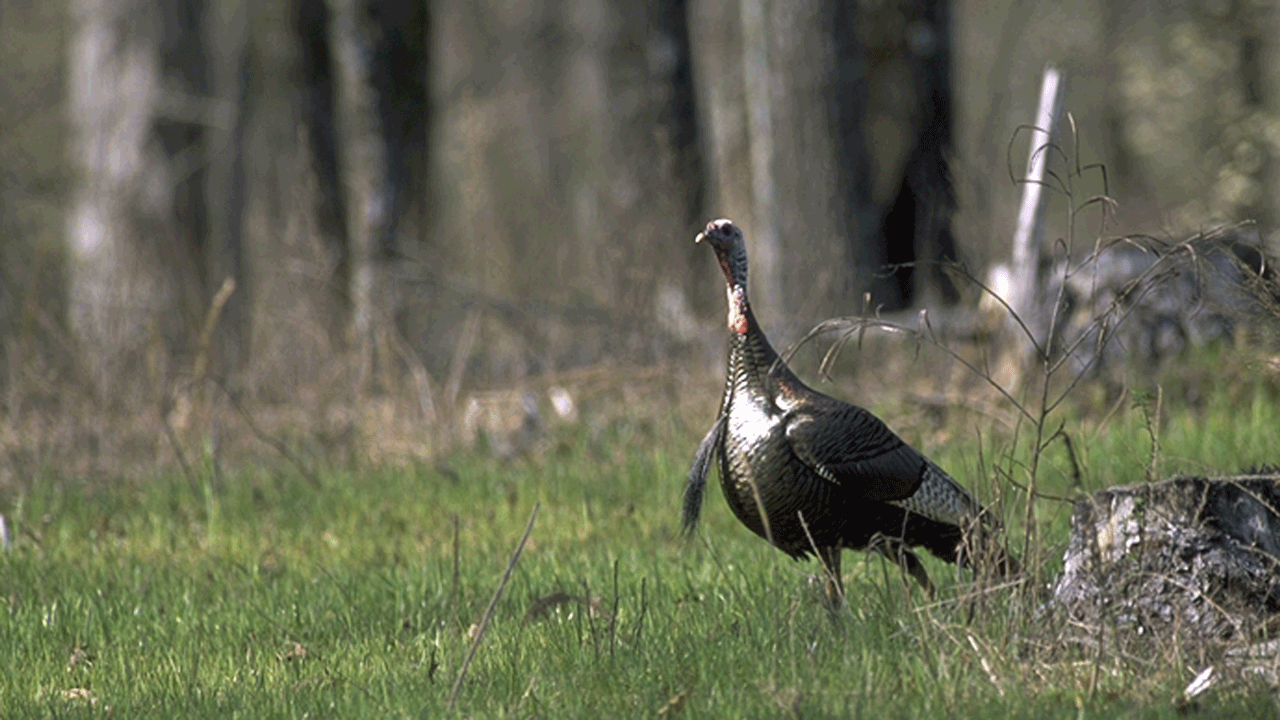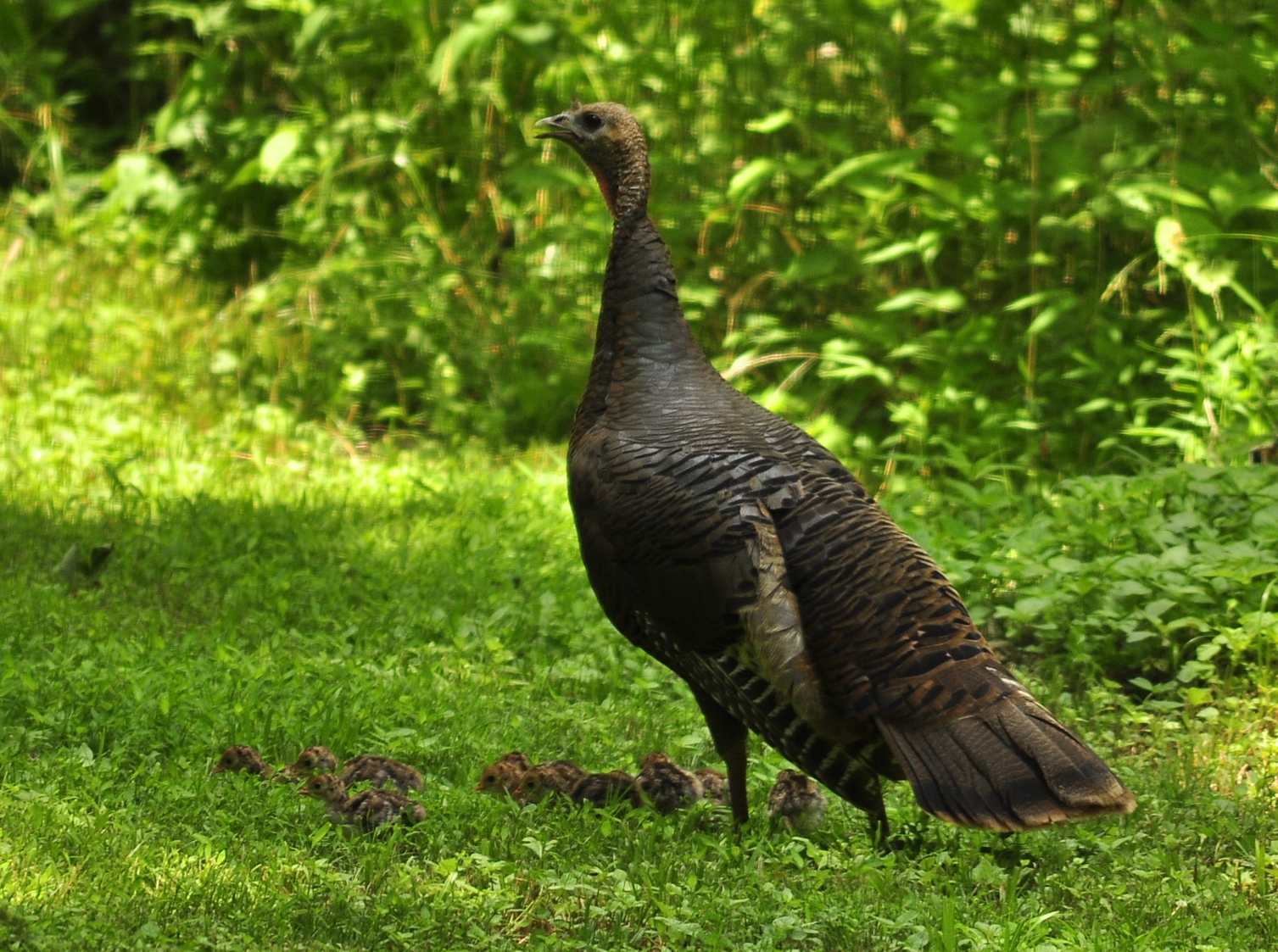by Brian Grossman
Regardless of whether you’re hunting turkeys in the spring or fall, knowing where turkeys will be – and when – will dramatically increase your odds for success. It’s imperative to know the natural food sources for turkeys on the places you hunt if you want to be at the top of your game and consistently punch tags. Here’s a look at how turkeys naturally feed, as well as the natural food sources for turkeys throughout the year.
A Closer Look at How Turkeys Naturally Feed Throughout the Year
Before we get into what natural foods wild turkeys prefer to eat, it’s important to have an understanding of how turkeys naturally feed, as this will give you a little more insight into their food selection. Like chickens, turkeys have an enlarged area of the esophagus called a crop. The crop temporarily stores food, allowing turkeys to quickly consume large amounts of food, up to a pound or more at a time. While in the crop, the food is softened before entering the gizzard. The gizzard is a muscular part of the stomach that can grind extremely hard foods, allowing the birds to digest things like acorns, pecans and even hickory nuts. In order for the gizzard to operate efficiently, turkey often swallow grit to aid in the grinding process.

Now that you understand how a turkey consumes and digests its food, let’s take a look at exactly which foods birds key in on by season.
SPRING
As temperatures rise in the spring, turkeys will continue scratching through forested areas in search of any remaining nuts and seeds. As soon as the fresh shoots of native grasses and forbs begin to emerge from the ground, turkeys will quickly turn their attention to those. This is also the time of year when insects will begin showing back up, providing another nutritious food source. As spring progresses, food becomes more abundant in the form of grass and weed seeds, and the breeding — and feeding — cycle starts all over.
SUMMER
It may seem a little odd to start our discussion of turkey foods in the summer, but late spring to early summer is when many poults are hatching across the U.S. As I mentioned earlier, those young, rapidly growing poults need lots of protein, meaning they will feed heavily on insects to get through their first several weeks of life. In this early stage of their life, they can be found foraging for grasshoppers, caterpillars, spiders, snails and worms just to name a few. They’ve even been known to snack on lizards and salamanders along the way.

As the young poults grow, they’ll slowly begin to depend less on insects and more on various types of plant matter. In the summer, that means soft mast like blackberries and raspberries, grapes, wild cherries, crabapples and huckleberries. In addition to soft mast, turkeys will feed on a variety of green grasses and forbs, as well as the seed heads of many annual and perennial weeds.
FALL
While turkeys will continue to feed on available grasses and forbs this time of year, hard mast is the dominant fall food source across much of the turkey’s range. This includes the acorns of both white and red oaks, as well as beech and hickory nuts. In fact, beech nuts are highly preferred by wild turkeys as they are nutritious and easy to digest, though not as commonly available as acorns.
Soft mast can still be important this time of year, as well. Berries from sumac, spicebush, hackberry, dogwood and even poison ivy are readily consumed. Although grapes, blackberries, persimmons and other soft mast may have dropped and rotted by later in the fall, turkeys will continue to scratch around those plant locations to get any remaining seeds that weren’t consumed. In the midwest, agricultural fields like wheat, sunflower, sorghum and corn can become extremely important to foraging flocks of turkeys.
WINTER
As fall turns into winter, hard mast continues to be an important food resource for turkeys. White oak acorns are typically the first to disappear, as they are more readily consumed by deer and tend to break down quickly. Red oak acorns, on the other hand, persist much longer because of their higher levels of tannic acid, providing a food source throughout the winter months. Turkeys will also continue scratching the forest floor for leftover mast and seeds. In areas with heavy snow cover, the birds will feed on the needles of white pine and hemlock, as well as on mosses, lichen, and the buds and stems of various hardwoods.
Take the time to familiarize yourself with how turkeys naturally feed on the properties you hunt and you’ll be ahead of the game when it comes to knowing when and where to make your move for success this year.